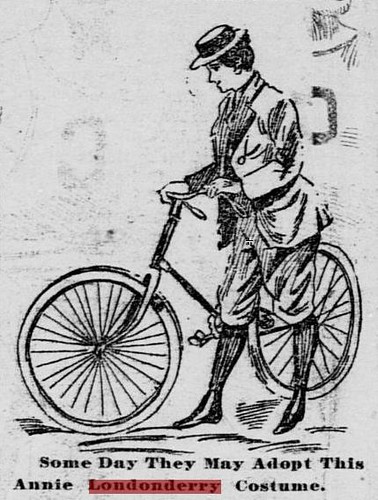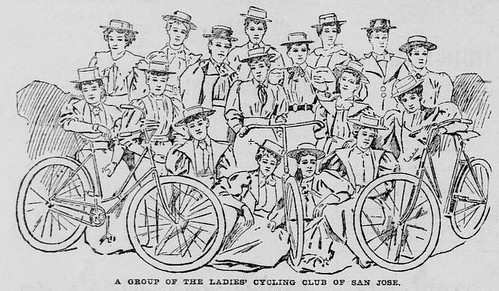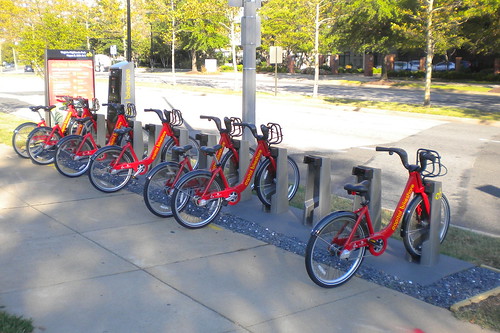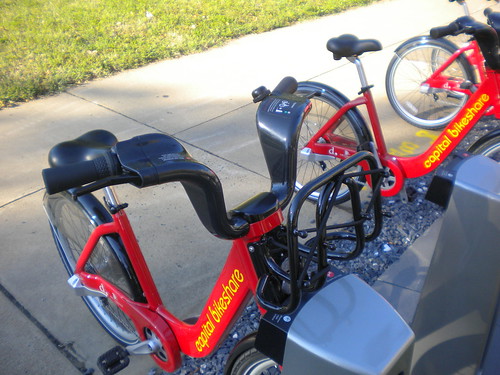From the St. Paul Daily Globe, April 14, 1895

Generally in 1895 women's cycling attire was more conventional, as shown here. (San Francisco Call, June 1, 1895)

When the first diamond frame bicycles became popular in the 1890s they were often called "wheels" - the national cycling association was called the "League of American Wheelmen." We have moved from "wheels" to "bikes," but the bicycles have remained remarkably the same over more than 100 years - elegant in their efficiency and simplicity. And many of the issues that we think are new? They were around then too.
"In my daily wait in Central Park," said Dr. Sayre, "I have been very much struck by the number of young men who ride bicycles in harmful positions. They lean over till their noses almost touch the front wheel, their arms fixed to the handles with the rigity of death, their chests caved in and their backs bent into a semicircle. The girls ride in better positions than the men as a rule, because their feminine self-respect prevents them from making themselves ridiculous."
"I have spoken to several of the young men in the park about it, saying to them: 'Now, my boy, why don't you sit up like that pretty girl." This usually has the effect of making them getting into better positions and also of making them feel uncomfortable."
"They tell me that they stoop because the resistance of the wind is decreased in this position, and they get more purchase on the wheel. But the exercise, if it really necessitates such a position, is worse than useless. The bicyclists should take time, and not be in such a feverish hurry."

You wouldn't think you'd have to explain that a human-powered, 20-pound, two-wheeled machine is vastly less expensive from every angle than a gas-powered, 4-wheeled car weighing several tons, but again, these are people who--in their rush to banish cyclists from the road, and despite the bumper stickers which spell this out--fail to consider that each bicycle is one less car to clog traffic.
Many people don't know that it is legal to ride your bicycle on a sidewalk in Seattle--at a safe speed, and yielding to pedestrians, not yelling to them--or that cyclists can ride two abreast in the street. Seattle requires you to have a helmet, brakes, and, at night, a white light on the front of your bike with a red reflector on back. Cyclists can use crosswalks, but not heedlessly endanger pedestrians or impede traffic. Cyclists are required to use hand signals. A person in a car can't open their door to traffic (bike or otherwise) in a way that impedes traffic.


Its small chapters outline issues such as the challenges of retrofitting streets with bike lanes, building off-street paths, adopting and enforcing bicycle parking codes and encouraging people to incorporate bicycling into their daily lives. In addition, it describes overcoming obstacles, business opposition and negative media coverage.